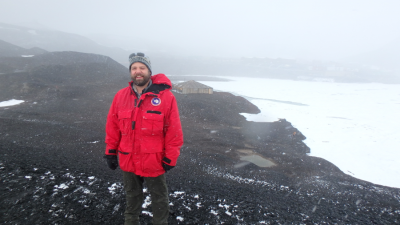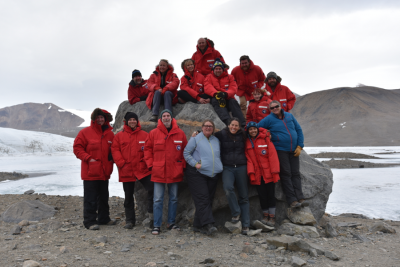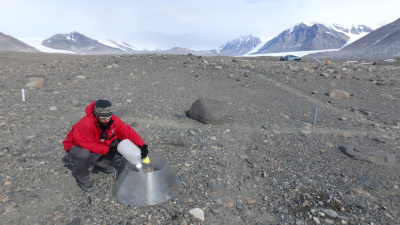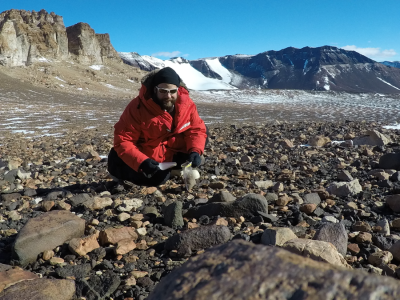Benefits of a Field Experience
PolarTREC has been an amazing experience, wow! The heart of the PolarTREC program is the field expedition, which allows the teacher to be embedded in a field research team. STEM educators are passionate about what they teach but often lack access to meaningful opportunities to participate in basic research. Programs like PolarTREC provide that missing opportunity.

One of the biggest responsibilities of a STEM educator is to communicate the nature of science to students. Participating in a field research project helps solidify an educators understanding of how science gets done. Firsthand experience also increases the credibility of the teacher in the eyes of the students. It becomes “real” for students when you can teach from personal experience in addition to your formal education. I believe that sharing and providing hands on experiences with students is key to inspiring favorable attitudes towards STEM and in some cases motivating students to pursue STEM careers.
Participation in a field expedition allows a teacher to dive into one particular field of study. The field experience helps you build specific skills while deepening your understanding of how science gets done. It also allows you to build relationships with researchers which can benefit both parties in helping foster effective science communication.
Summary of the Expedition
My PolarTREC expedition placed me with the Soil Team of the McMurdo Dry Valleys Long-term Ecological Research (LTER) project in Antarctica. Four principal investigators lead the soil team: Diana Wall (Colorado State University), Ross Virginia (Dartmouth College), Jeb Barrett (Virginia Tech), and Byron Adams (Brigham Young University). 
The project’s broad objectives are to look at how soil communities respond to environmental change. The field research focuses on long-term monitoring of soil community structure in relation to soil characteristics (e.g. moisture, pH, conductivity, carbon, nitrogen, and phosphorus). Most of our fieldwork was pretty straightforward and consisted of collecting soil samples with a plastic scoop. There is also a significant manipulative aspect to the project that explores how soil communities respond to disturbance. Current experiments include a stoichiometry experiment where plots are treated with water, carbon, nitrogen and phosphorus in various combinations. There is also a large-scale experiment that is intended to simulate different levels of permafrost thaw across a slope. Additional monitoring and sampling occurs on past projects, which have included manipulations of soil temperature and moisture. 
Extracting animals from the soil samples and counting them by species, sex, and age-class dominated lab work while we were at McMurdo Station. Additionally we tested soil samples for soil moisture, chlorophyll A (as an indication of primary productivity), and soil chemistry (e.g. pH, conductivity, nutrient content).
Expectations for the Field Experience.
I went into this field experience hoping to be reenergized as a science teacher and to learn more about LTER projects, polar science, climate change, and soil ecology. I also hoped to gather ideas about how I can more effectively structure research experiences for my high school students. The field experience exceeded all of my expectations. 
With each passing year since I was in graduate school I have felt more disconnected from the research community. My field expedition to Antarctica has helped me feel like I have reconnected with my roots as a scientist. This has helped me feel more excited about exploring new ways to connect with my students through meaningful science experiences.
One of the things that I have tried to establish with my students is an ecological research site patterned after the National Science Foundation’s LTER network. Our mini-LTER site is located in the foothills near our high school. Spending a month working on the MCM LTER project has helped me come up with ideas about how I can make our research at our mini-LTER more authentic. In particular I saw how important the collaborative nature of an LTER is. 
Through PolarTREC I have gained more knowledge about the importance of polar science and climate change. My expedition specifically taught me a lot about soil ecology. This has given me more confidence to teach these subjects to my students and I am excited to explore ways to incorporate these subjects into my curriculum in the coming school year.
Future Applications of the Field Experience
I have enjoyed the opportunity to share my research experience with my students, students at other schools, and with various community groups and through local news outlets. I plan to continue to share my PolarTREC experience with other teachers through conferences of the Utah Science Teachers Association and the Association of Utah Career and Technical Education. I look forward to finding additional ways to share with a broader audience.

I am developing lesson plans for collecting and identifying tardigrades with a dichotomous key and for analyzing soil animal communities using Baermann funnels. I plan to overhaul the data collection activities that my students do at our mini-LTER to reflect the process I observed in Antarctica. I would also like to develop some biotechnology related activities with tardigrades.
My trip to Antarctica has also inspired me to teach a mentored research class next year at our high school. I have high hopes for involving my students in research projects related to the research I experienced in Antarctica. I think this class will be a big benefit to the students involved and it will help build the science program at our school.
In short, participation in PolarTREC has been transformative for me as a STEM educator. I am grateful for this wonderful experience. In my ideal world every STEM teacher would have the opportunity to participate in a meaningful field research experience.
| Attachment | Size |
|---|---|
| Download Report2.1 MB | 2.1 MB |
This program is supported by the National Science Foundation. Any opinions, findings, and conclusions or recommendations expressed by this program are those of the PIs and coordinating team, and do not necessarily reflect the views of the National Science Foundation.
